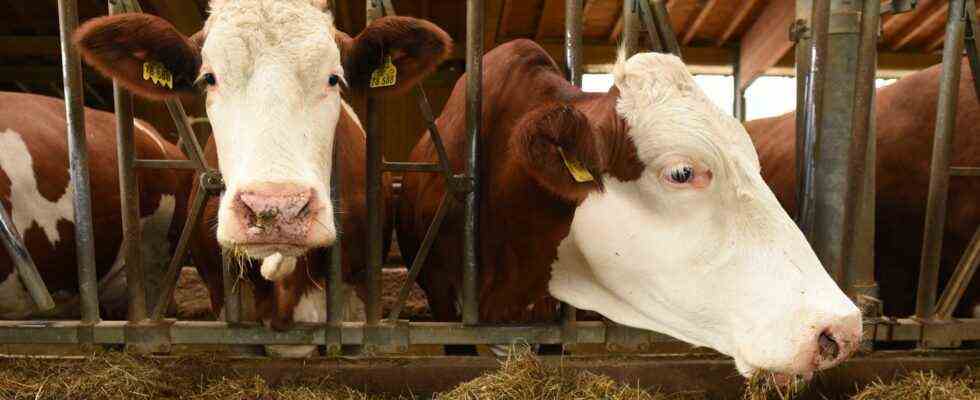analysis
Status: 04.11.2021 10:53 a.m.
According to the agreement reached at the world climate summit, methane emissions should drop drastically by 2030. To do this, the EU countries would have to fundamentally change their agriculture – and consumers would have to change their diet.
When she wants to achieve something, Ursula von der Leyen likes to explain it with many gestures and vivid pictures. Everyone should understand. That was also the case with the methane problem, shortly before the decisive summit round in Glasgow. Methane, as the EU Commission President explained, is something like “a fruit that hangs deepest on the tree” – that is, relatively easy to pick, that should mean. “Reducing methane emissions is one of the most efficient things we can do,” said von der Leyen. Methane plays a significant role in global warming, but it can also be reduced quickly and effectively.
Methane is considered to be the fire accelerator of the climate crisis. Therefore, with a reduction of 30 percent by 2030, something can be achieved quickly, according to the Commission’s head. This would mean a change of course for Europe’s agriculture – a reform that the EU’s agriculture ministers have always opposed. “So far, the agriculture ministers have excluded the issue,” says MEP Jutta Paulus. The Green politician is in charge of the subject of methane in parliament. In Glasgow she represented the MEPs. “From our point of view, it is essential that agriculture will have to move here too,” she says.
A lot of methane is produced in agriculture
The lion’s share of climate-damaging methane is produced in agriculture. It comes from the stomachs of ruminants. More and more cows and cattle in less and less space – from Jutta Paulus’ point of view, the climate targets cannot be achieved in this way. “From our point of view, it is not possible to achieve the goal if we do not reduce the number of animals.”
Research is looking for alternatives, even for extensive animal husbandry, “by using, for example, catalysts that are then held over the nostrils”. But Paul finds it rather unrealistic to use this to achieve an effective methane reduction.
Shifting animal husbandry is not a solution
A third fewer dairy cows in Europe, a third fewer fattening bulls – this could significantly reduce methane emissions. In theory, that would also be quick. Sebastian Lakner, Professor of Agricultural Economics at the University of Rostock, warns against such rushes. “If we want to reduce the number of animals in Europe, then we have to think about world trade.” It just doesn’t make sense to “replace the climatically relatively favorable German dairy farming with dairy farming in Brazil, for example.”
If there were milk and meat from overseas on the supermarket shelves, it would not be of any benefit to the climate. In order to keep domestic products competitive, Lakner is proposing a border tax in the short term, which makes the import of climate-damaging food more expensive. In order to contain the climate crisis globally, however, from the point of view of the agricultural economist, there is no avoiding changed eating habits. “Overall, we have to get down from our high level of meat consumption.” Less meat is good for the climate, not only beef, but also pork. “We have to ask ourselves: To what extent is it climate-compatible to consume a lot of beef and milk?” This change in awareness must be supported politically.
Germany is Europe’s largest milk supplier
Up until now, this was a foreign word for Europe’s agriculture minister. In the most recent attempt at reform last year, the contribution of intensive agriculture to the climate crisis only played a subordinate role. Federal Minister of Agriculture Julia Klöckner was also one of the brakes.
With around four million cows, Germany is the largest milk supplier in the EU. But the trend towards ever more intensive animal husbandry could be stopped by the pressure of the climate crisis. In any case, Commission head von der Leyen has put Europe’s governments under pressure with her initiative for 30 percent methane reduction.
The future government in Berlin should play a pioneering role in this. She faces the challenge of reducing the number of livestock and at the same time securing the livelihood of the cattle farmers to some extent. Experts believe that this will only be possible through higher milk and meat prices. If farmers got better prices, so the rationale, they could afford to produce less. The climate would also benefit from this.
What are the implications of the Glasgow methane targets for Europe’s agriculture?
Helga Schmidt, ARD Brussels, November 4, 2021 9:30 a.m.

